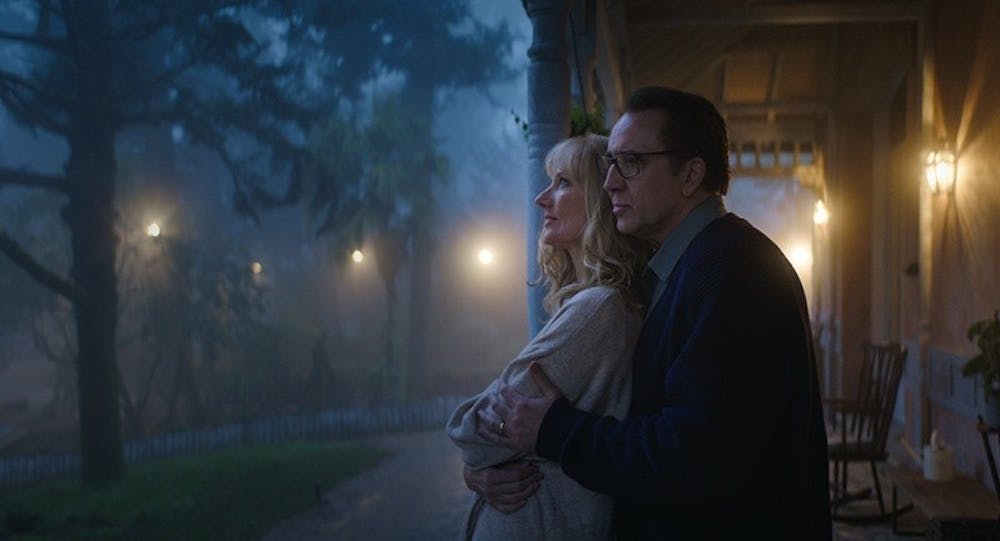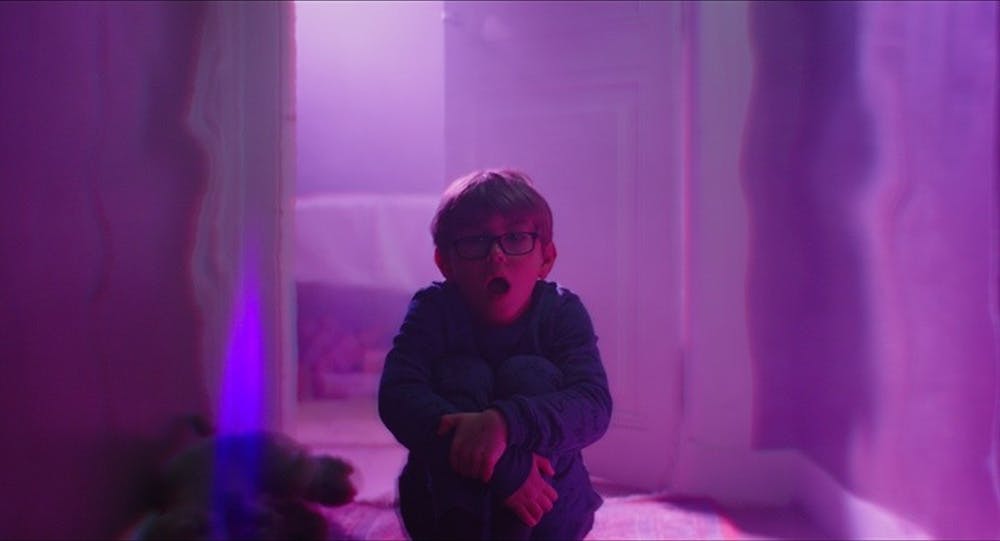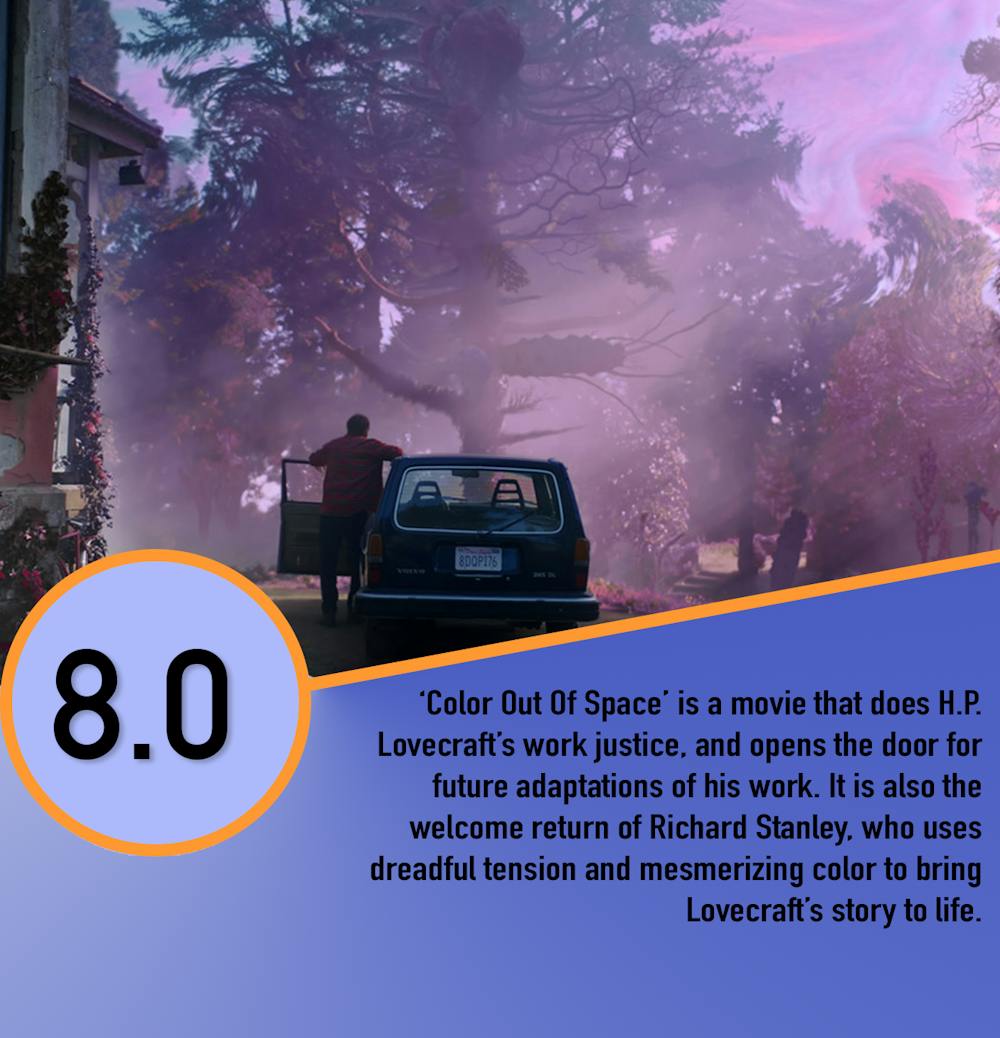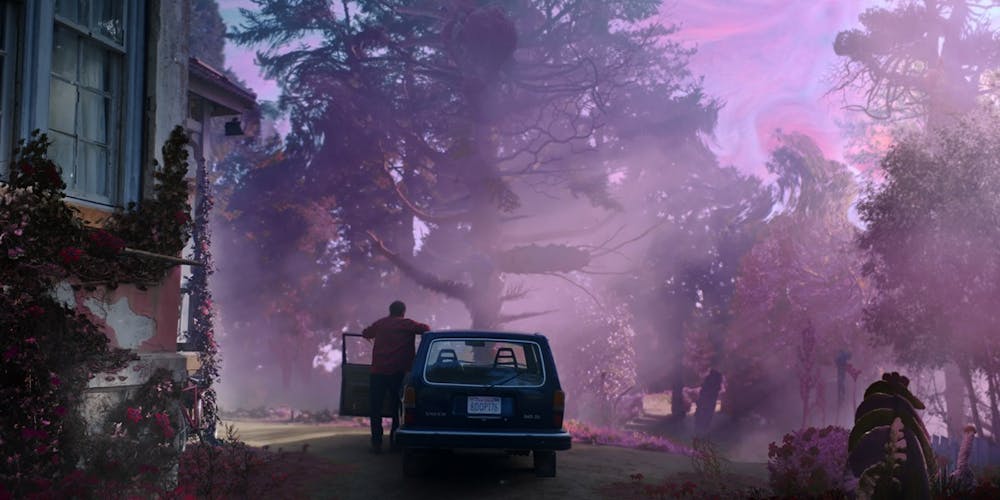The works of Howard Phillip Lovecraft are elusive when it comes to adapting them to the silver screen. His works are incredibly influential when it comes to popular culture, since they serve as the basis for the popular Cthulhu Mythos and created the subgenre of cosmic horror. However, film adaptations of his work are incredibly rare. Guillermo del Toro tried to make a big-screen adaptation of At the Mountains of Madness back in 2006, but it quickly fell apart because of his refusal to give the movie a PG-13 rating. The closest things to proper adaptations are either movies that adapt Lovecraft’s stories in spirit, such as In the Mouth of Madness or Annihilation, or movies that perfectly capture the tone of his work, like last year’s The Lighthouse.
However, that is no longer the case, as the first proper adaptation of Lovecraft’s work has arrived with Color Out of Space, adapted from the short story of the same name. It is also the triumphant return of writer-director Richard Stanley, being his first feature film in over 20 years, after being fired from 1996’s The Island of Dr. Moreau (a movie that’s infamous for its heavily troubled production). Stanley not only brings the first proper Lovecraft adaptation, but also the first great horror movie of 2020.
The film follows the Gardner family, consisting of Nathan (Nicholas Cage), Theresa (Joely Richardson), and their three children Lavinia (Madeleine Arthur), Benny (Brendan Meyer), and Jack (Julian Hillard), who have recently moved to the countryside after inheriting a family estate near Arkham, Massachusetts. Their mundane existence comes to an end when a meteorite lands in their backyard and begins to alter everything around them, marked by a mysterious, indescribable color.
Performances that capture a descent into insanity
A strong aspect that this film has going for it is its acting. It is very good all across the board, perfectly capturing how disorienting and bewildering the whole experience is. However, we should begin by addressing the elephant in the room that is Nicholas Cage. The man has been mocked and memed for being an incredibly over-the-top actor who has made some very questionable movies over the course of his career. Be that as it may, he has made a resurgence as of late, having starred in movies like Mandy and Mom and Dad, which show he’s still capable of giving a good performance. Color Out of Space does a great job of utilizing his talents.

Image from IMDb
Right off the bat, Cage’s character Nathan is established as being somewhat of an eccentric, between cooking French dishes for dinner and raising alpacas on his farmstead. Because of his eccentricity, this role is more or less tailor-made for Cage. He does have an over-the-top freak out at one point, but it fits in the movie as it happens in a moment of anger and frustration. And, in the latter half of the movie, Cage becomes creepier and more unsettling as the color begins to affect him.
Aside from Cage, another huge standout in the cast would be Tommy Chong as Ezra, a hippie hermit who squats on the Gardners’ property. His screen time is limited, but Chong makes the most of it. Ezra’s established as quite a character; he likes to brew his own java from well water. He’s a complete delight and an utter scene-stealer.
Enticing, haunting horror
As previously mentioned, this is Richard Stanley’s first feature film in over twenty years, and this proves that he still has it when it comes to directing. The opening of the film is an entrancing montage of the gloomy, fog-filled forests of Arkham, with narration reciting the opening paragraph of the original short story playing over it. It does a fantastic job of setting the mood of the movie.
What consistently enhances the feel of the movie is the ’80s-inspired synth score. The soundtrack was composed by Colin Stetson, who also did the score to Hereditary. It simultaneously sounds beautiful and alien. It not only entices and mesmerizes, but also adds to the uncomfortable, surreal atmosphere of the movie.

Image from IMDb
One particularly praise-worthy element is how Richard Stanley uses color to depict the titular “color out of space,” which is frequently described as something that nobody has seen before in the film. Stanley portrays the alien color as magenta. While this may seem like a simple cop-out at first, it’s actually a smart way of depicting the color. Magenta is not on the visible spectrum of light, and only exists because the brain needs to fill in the gap between red and green light. Therefore, portraying the alien color from the meteor as magenta is an ingenious move.
However, the one aspect that stands out from everything else in this movie would have to be its style of horror. Stanley perfectly captures the slow-burning dread and madness that is Lovecraft’s trademark. The dread in the first half gives way to skin-crawling, stomach-churning body horror in the second half of the movie. The body horror is so effective that it would make David Cronenberg squirm in his seat.
This is where I must warn everyone that this is not a movie for the faint of heart or horror lightweights. This is easily the most nightmarish and disturbing horror movie I have seen since Midsommar. I consider myself a rather seasoned horror fan, and this film had me relentlessly scared and traumatized, as if I were a character in one of Lovecraft’s stories.

Images: IMDb
Featured Image: IMDb
For more entertainment related content, visit us at Byte BSU!



















